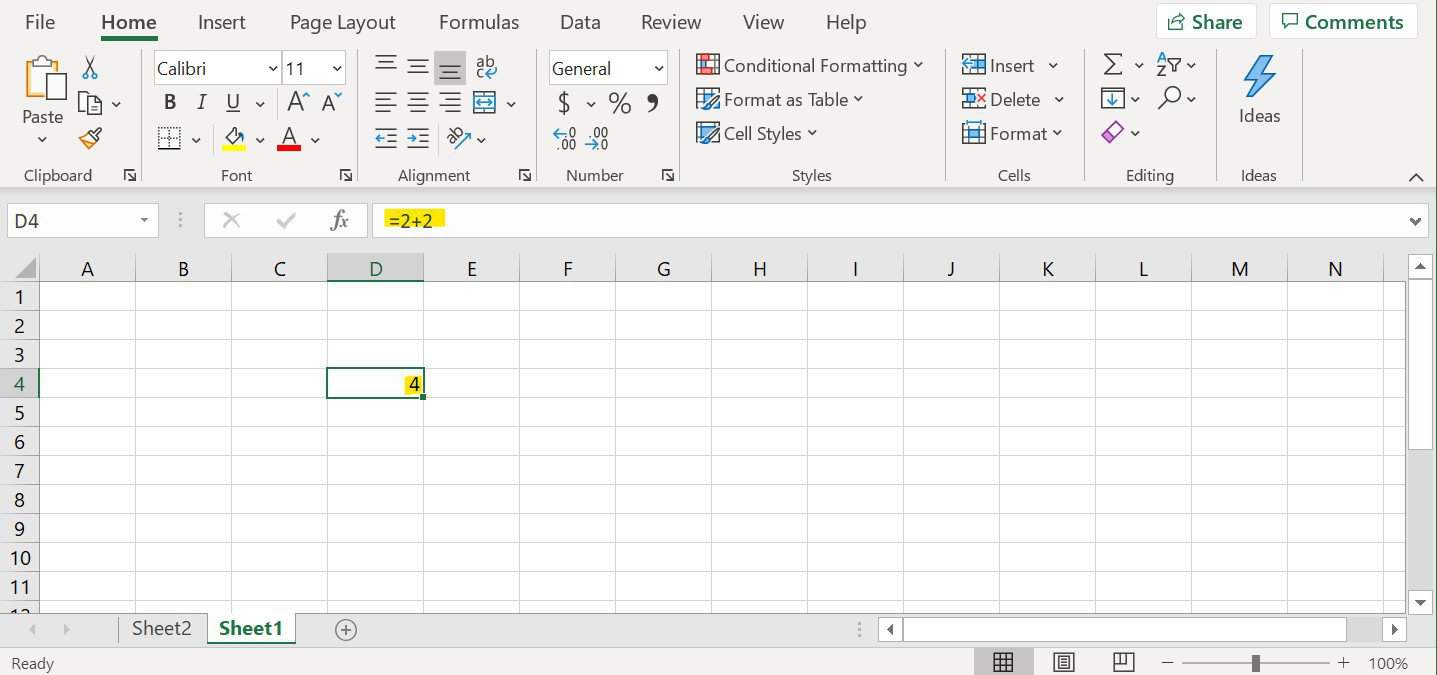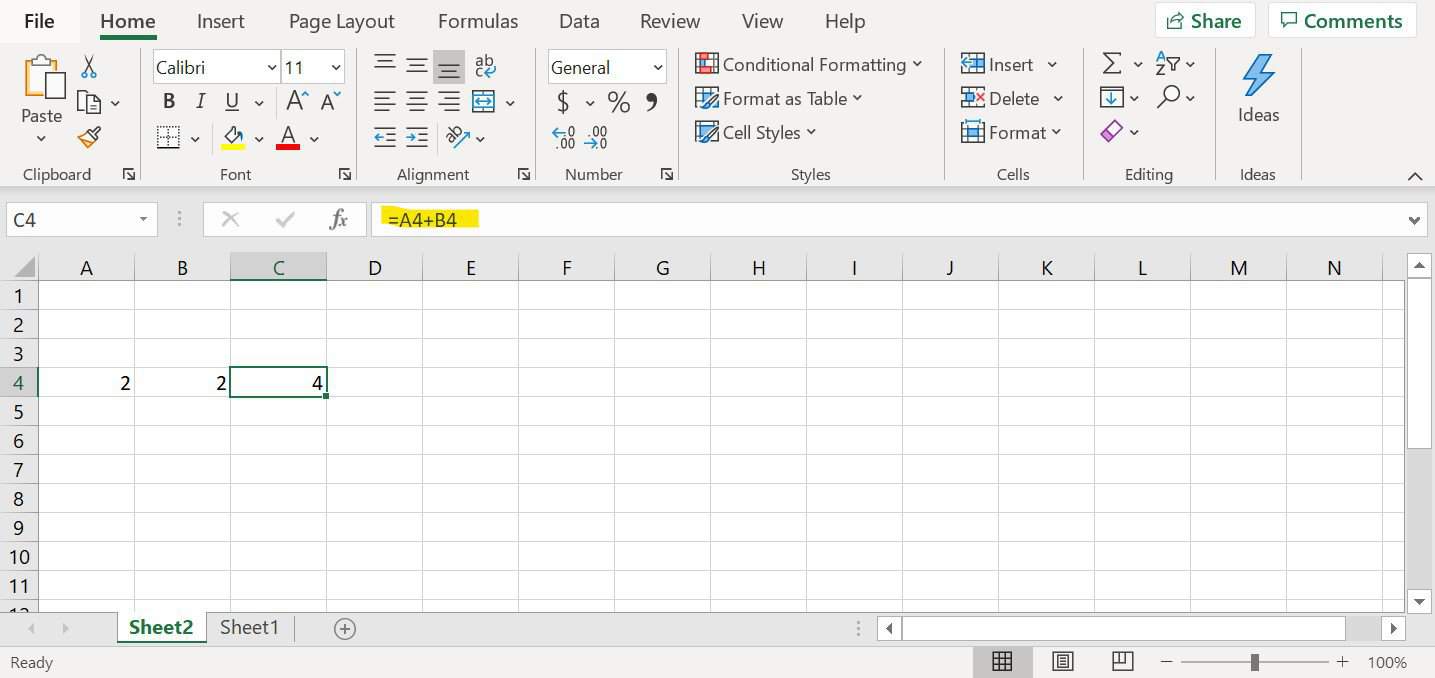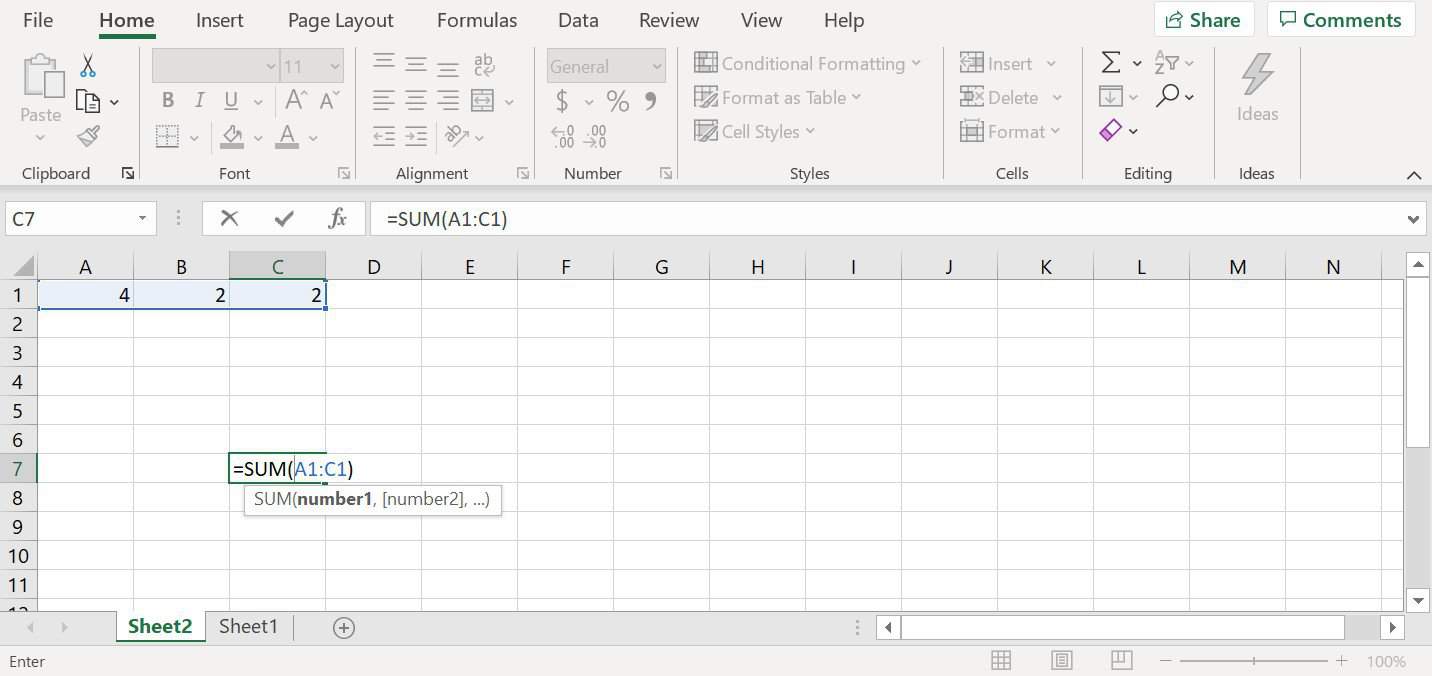The addition formula is one of the basic functions you can perform in Microsoft Excel and other spreadsheet programs. There are several different ways to use the addition formula in Excel and many different times when the formula will come in handy when you are working with data in your spreadsheet./
In this article readers will learn the basic addition formula for Microsoft Excel. Users can find examples and a how-to guide for entering formulas themselves and using the sum feature.
In the following article, we will discuss the different ways you can enter an addition formula, and when it is appropriate to use the formula. This will include sections on:
What Is a Formula in Excel
In Excel, a formula is a way to perform calculations and other operations on your data. There are basic formulas such as addition or subtraction, which we will discuss in this article, and much more complex formulas that make calculations for advanced statistics or engineering problems. In essence, a formula is performing some simple, or complicated, mathematical function.
Any formula that you make in excel will begin with the “=” symbol and are most often entered into a specific cell of your choosing. For example, if you typed “= 5 + 3 + 8” into the cell A1 and pressed enter, what would you expect to get back? If you said 16, you’re exactly right. Pretty easy, no?
Values are not the only thing you can add using the addition formula. Formulas can also contain constants, individual cells (for example, B22) or a range of cells (for example, F2 to F22), functions, and operators.
In Excel, values are not limited to numbers. They can include dates, text or words, and Boolean values.
The Basic Addition Formula

As we noted above, the basic addition formula is quite simple. Except for the syntax, you probably recognize it from your elementary school math class. In Excel, instead of writing “2 + 2 =”, you write = 2 + 2 and the program will spit back to you the number 4.
You can also write the names of cells into your formula instead of numbers and get the same result. For example, if you typed = A4+B4 into the C4 cell, the program would then do perform the function and give you the result in C4. In this case 4.
The huge advantage to using cell references rather than typing in the data is that if change the data in a cell, the formula will automatically change. This will cut down on making any errors when working with your data.
More Advanced Addition
As noted above, one way to do this is to type in the range of cell references you want. Above we did “=A4+B4” and got 4 back.
If you’re more of a mouse person, the other easy way to do this is the point and click method. Start by typing a “=” into C4. Now click on cell A4. This should show “=A4” in the cell. Then type the “+” sign and click on the cell you want to add to A4. In this example, we will do B4. Cell C4 will now have the completed formula “=A4+B4”.

When you press enter, you will get the result, 4.

If you need to change the formula, say you want to multiply the cells instead of adding them, double-click the cell containing the formula and change the “+” to “*” and press enter.
The Sum Function
In Excel, you don’t need to use the operator “+” to add together two or more numbers. You can also use what is called the SUM function. As with all formulas, you still start by typing an “=”, but now you type SUM and whatever numbers or cells you want added up.
For example you can type =SUM(2,2) into a cell.

When you press enter you’ll get 4.
You can also type in cell references, for example, =SUM(A1, B1, C1). If you want to do a range of cells, type =SUM(A1:C1).

The Sum Function for Rows and Columns
All of our examples so far have been pretty easy, and you might be wondering, why do we need such an easy formula when you can do it in your head?
Well, the more data you have in your spreadsheet, the longer it will take for you to do the addition by hand. Imagine you’re working in sales, and you have a spreadsheet that keeps track of units of your product you’ve shipped in the past year as well as the units that remain in your warehouse.
You could sit there and calculate the entire inventory by hand, but then what would the point be of recording everything in a spreadsheet?
To cut down on time without creating an elaborate formula to perform addition, you can use the “SUM” function. The SUM function is incredibly useful if you’re like our salesperson who wants to add up her sales from the previous year.

In the example, you can see that we have a lot more data than in the earlier examples. By using the SUM function, we can easily add together all the data in a given column. You can do the same thing for a row, or for both rows and columns simply by typing in or clicking on the range you wish to add up.
You can later use this data to create pivot charts, or pivot tables.
Bringing it all Together
In this article, we introduced the addition formula for Excel spreadsheets. We discussed some of the reasons why you might choose to use the addition formula, types of values and references that can be added using the formula, and some of the shortcuts you can use to tell Excel to add data in your spreadsheet.
